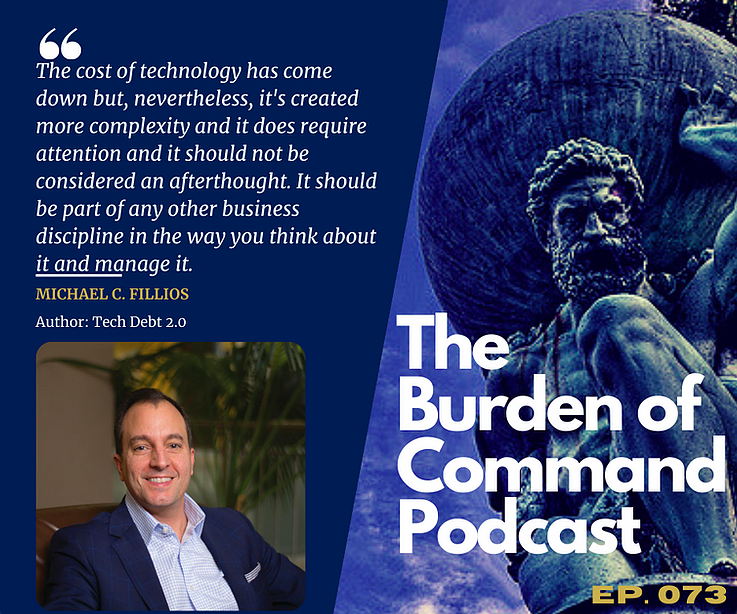2020 was the year the world changed. Paradigms shifted, long standing assumptions were overturned. Business plans were disrupted, and competitive positions were realigned.
New Environment, New Challenges
Businesses were heavily impacted by change. Some were advantaged, others disadvantaged by the disruption. For example, a company with technology to facilitate staff working remotely is better positioned than a company with staff tied to the office. No matter, each is faced with the challenge to evaluate opportunities and threats and take steps to preserve and create value in this new environment.
Mining for Value with Technology
Accelerating digital transformation is a strategy many businesses are taking to build and safeguard value. Changing demands from customers, the work force and all participants in the supply chain are driving investment in and adoption of technology. Advances in technology tools, capabilities, and processes are fueling digital transformation. The pace of technology development is ironically demonstrated in the negative where microchip scarcity is shutting down production of mid-level vehicles to feed the chip requirements of higher profit, top-of-line cars.
Gartner forecasts the overall, worldwide IT spend for 2021 to increase 8.4%, rebounding from a 2.2% decline in 2020. Much of the increase will reflect the adoption of cloud and other (X)aaS technologies. The proliferation of data and investment in analytic tools, artificial intelligence and machine learning will allow businesses to derive actionable information from raw data, gain competitive advantage and increase their value.
The use of these technologies will change from the tactical, IT supporting business processes to the strategic technology as core components of the enterprise. Data will become a value bearing asset.
The Strategic Value of Cybersecurity
Digital assets are not the only source of increased value for an enterprise. Technology and globalization have created an exposure that is an existential threat to businesses of all sizes. Attacks have become daily events as major companies, institutions and municipalities are targets of cybercrime and disruption. Ransomware, phishing in all its forms and similar attacks drain billions from businesses each year. Another class of attack threatens the basis of our societies’ undermining principals of democracy, clouding many aspects of our lives with misinformation, conspiracy theories, “alternative facts”. etc.
In this environment businesses that can build a robust cybersecurity defense increase their value and safeguard their future. Much like the technologies used to leverage data, cybersecurity needs to become a core component of the business, incorporated into all areas and activities. The value of strategic cybersecurity is the responsibility of everyone who comes in contact with the enterprise. Planning and implementing an architecture of cybersecurity will take into account customers (future and active) and all points on the supply chain (not just vendors but all providers of professional services). All staff should know that cybersecurity is valued as a key asset of the organization and the role that plays in the work they perform. All leadership in the organization should provide example of their understanding of, and adherence to, cybersecurity practices. The higher the leadership the more clearly demonstrated the commitment to cybersecurity.
Strengthen and Increase Resilience
PricewaterhouseCoopers (PwC) conducted their Global State of Information Security Survey (GSISS) for 2021 last summer. They surveyed 3,249 C-level executives, worldwide, across a range of industry sectors. The survey confirms that cybersecurity is no longer the sole purview of the IT department. “Although tech is very much in the picture—security leaders are working closely with business teams to strengthen and increase the resilience of the organization as a whole.” 50% of responders say that cyber and privacy will be baked into every business decision and plan”, up from 25% in the previous year’s survey. “Fifty-five percent of executives plan to increase their cybersecurity budgets, with 51% adding full-time cyber staff in 2021 — even as most executives (64%) expect business revenues to decline.”
With businesses, in their entirety, embracing the need for cybersecurity. executives want increased testing across a wide range of scenarios so they can anticipate attacks, plan, and take steps to ensure their critical business function will stay up and running. “It is not possible to forecast the future, but it is possible to plan to address imaginable scenarios.” Disinformation attacks and threats sponsored by nation states are among the scenarios identified as concerns in the survey.
Cyber Assets Future Proof the Business
This cyber threat environment demonstrates the real value businesses can create by developing a broad and deep cyberdefense strategy encompassing all areas of the enterprise. Such a strategy represents a lasting asset, safeguarding the future of the business. This is value, equally as important as intellectual property, new products, research and development, and a loyal customer base.
Develop a Cyber Secure Architecture but don’t Ignore Infrastructure and Technical Debt
New technologies can increase the value of a business, but it is important to not overlook the infrastructure that supports the business. Obsolescence of hardware or software generates vulnerability and can undermine the efforts and progress made to create a new class of assets. Servicing tech debt by strategic updating, maintenance, and retirement of systems and equipment that is out of date is an essential part of preserving value. Strategies for recognizing and managing tech debt are covered in the book, “Tech Debt 2.0®, How to Future Proof Your Business and Increase Your Tech Bottom Line”, published by the IT Ally Institute in April 2020.
Value for the Future
Investors understand that the value of a business is based on its ability to thrive and deliver returns in the future. Preparing a business for the future in today’s environment depends on assets that promote speed, flexibility and resilience. Emerging technologies can prepare a business to meet future challenges and safeguard against evolving threats.
Michael Fillios is the founder and CEO of IT Ally Holdings, a diversified holding company that provides IT and Cyber advice and consulting to family owned and private equity backed small and medium size businesses (SMBs) and Credit Unions. As a former Fortune 500 global CIO, small business CFO, technology entrepreneur and management consultant with more than 25 years of experience, he is responsible for driving the strategic vision and growth of the IT Ally Holdings companies including IT Ally, CU Ally, fraXtion and the IT Ally Institute.
This article was originally published on Architecture and Governance.
















